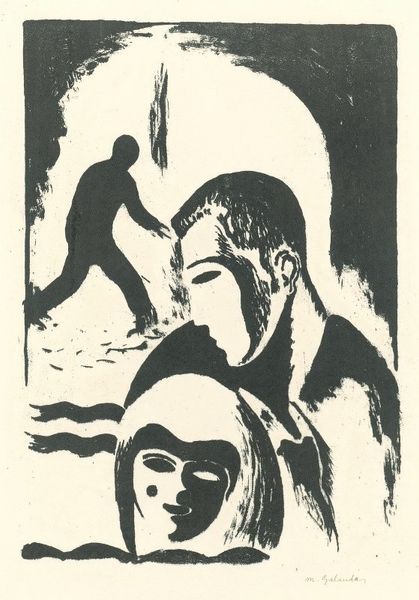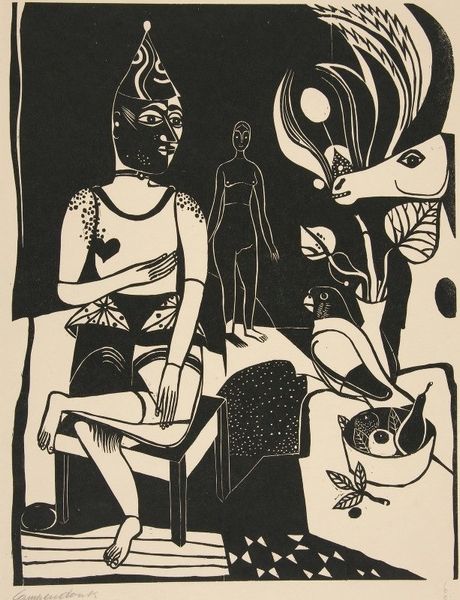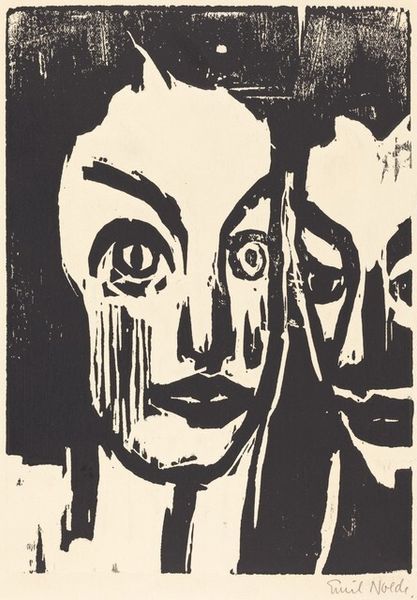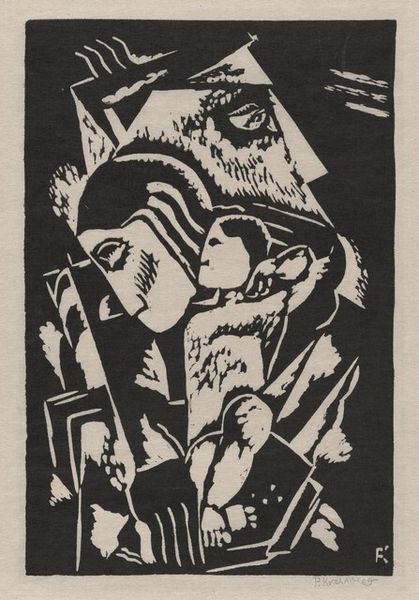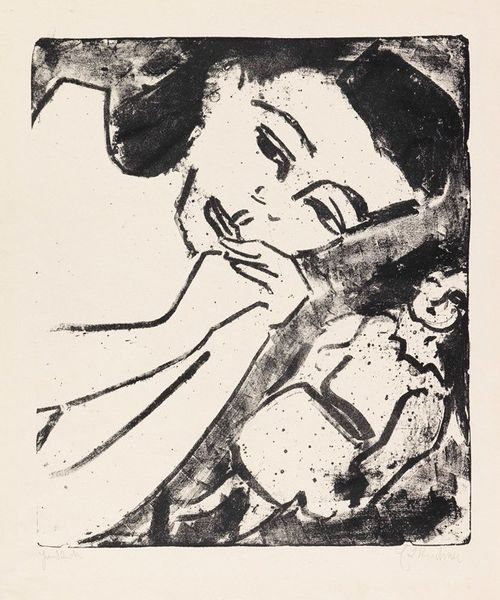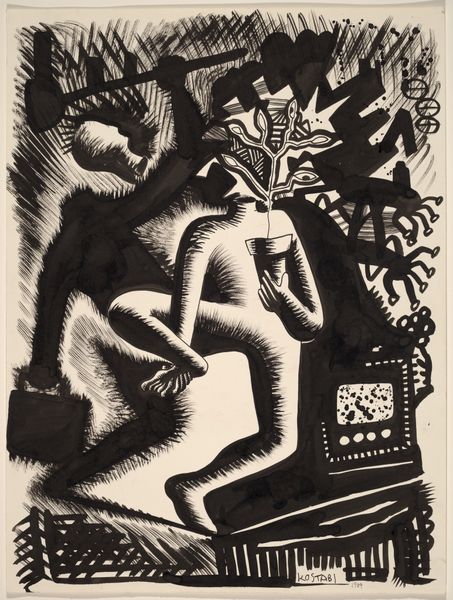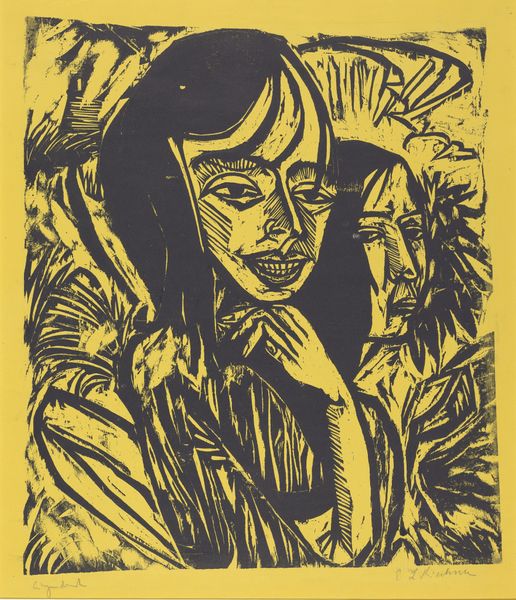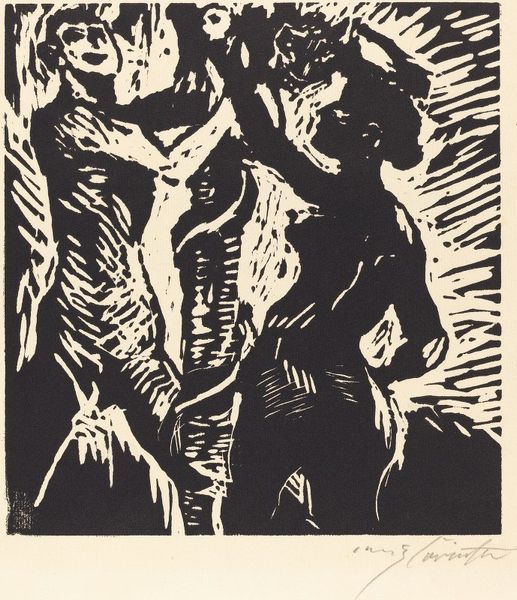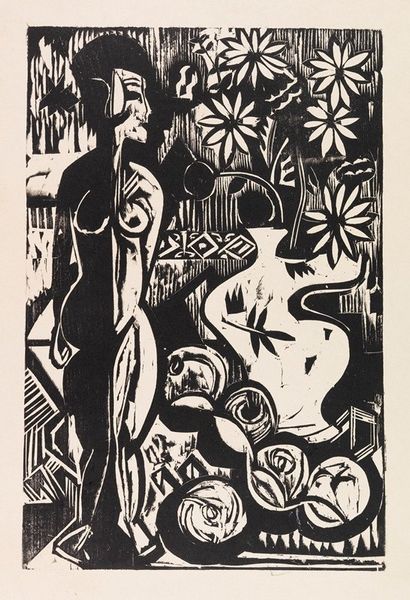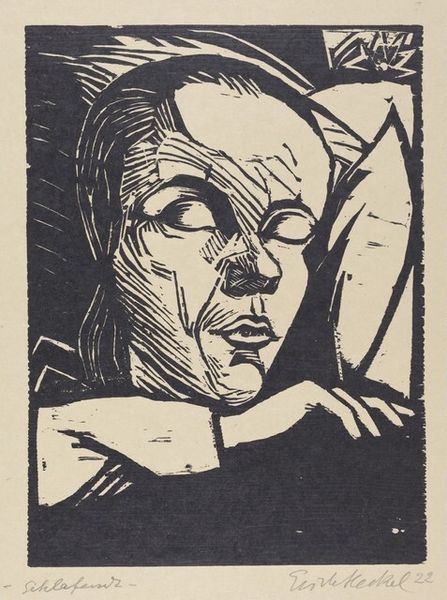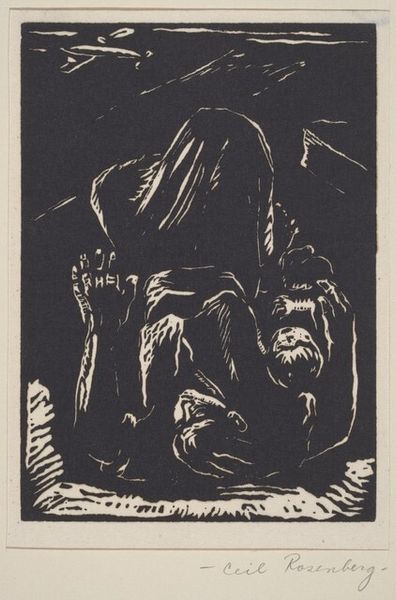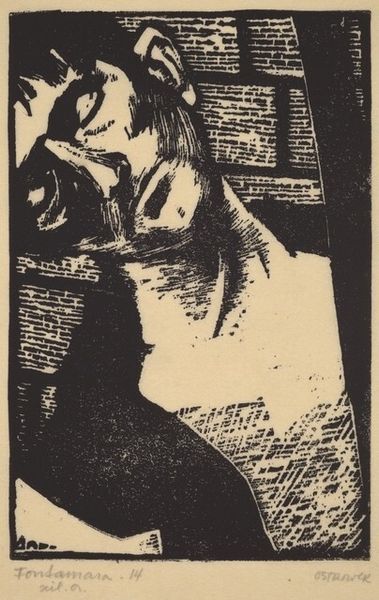
print, woodcut
#
portrait
# print
#
caricature
#
figuration
#
expressionism
#
woodcut
Dimensions: image: 24.9 x 19.5 cm (9 13/16 x 7 11/16 in.) sheet: 39.5 x 30.7 cm (15 9/16 x 12 1/16 in.)
Copyright: National Gallery of Art: CC0 1.0
Editor: This is Hans Orlowski’s 1920 woodcut, "Girl with Cat." The sharp lines create a pretty intense feeling; it's very graphic. What's your take? Curator: Given the sociopolitical context of Germany in the 1920s, what stands out is the expressionistic style used here to portray not only a 'Girl with Cat,' but more broadly the disquiet and unrest bubbling beneath the surface of everyday life. Editor: Can you elaborate on that unrest? How does it relate to the art? Curator: Consider the prevalence of Expressionism during that time. Artists gravitated toward distortion and exaggeration to mirror their own fraught emotional states, which had broader appeal in interwar Europe. This work might engage with shifting roles in the post-war climate. What do you think about her gaze? Editor: It feels pretty confrontational, maybe even a bit weary. She isn't idealized at all. Curator: Exactly. The stark black and white, characteristic of woodcuts, adds to that intensity. Remember that printmaking allowed for wider distribution. Pieces like this, challenging societal norms, could reach a broad audience, sparking dialogues on social identity and anxieties of the era. How do you see this print fitting into the public sphere of art? Editor: I didn't realize that the print medium would let people see it more. I guess it was kind of revolutionary, because it wasn't hidden in someone's private home or collection. It makes the work political in a way that maybe a painting wouldn’t be. Curator: Precisely! Now you’re getting a sense of how deeply intertwined art, society, and politics can be. Editor: Seeing it that way, I definitely understand the impact better. I'll definitely remember that background when I encounter Expressionism.
Comments
No comments
Be the first to comment and join the conversation on the ultimate creative platform.
